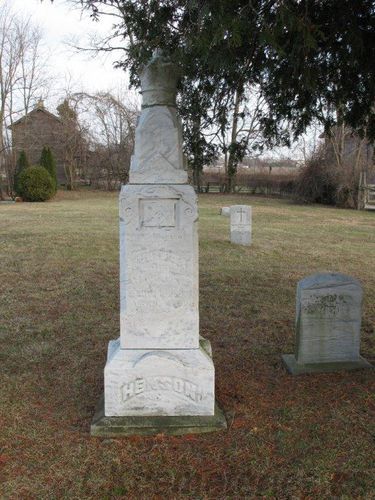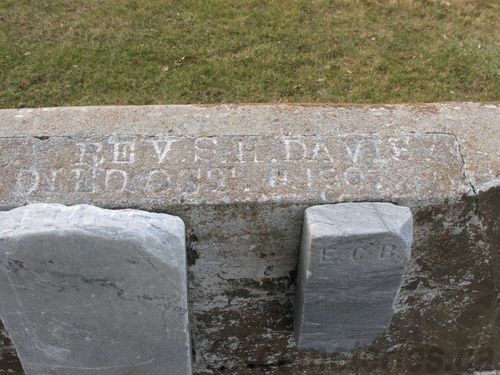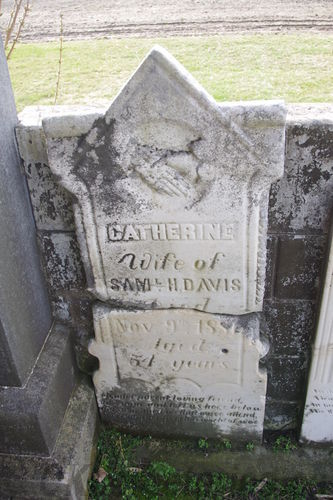This site was founded by the late John Skakel. Contact us HERE
Cemeteries Office Staff have asked that users NOT contact them with questions directly.
The Dawn Settlement of Dresden and the British American Institute
See the actual history of the old cemetery locations themselves
An Introduction
The history of Dawn Twp and Dresden we are told is very much misunderstood today. This though is not the place to discuss that history except in a VERY limited fashion, just enough to allow people to understand some of the monuments that are seen there in that area's burial grounds. Others are more equipped to document that history in books and museums in the area. We only tell the story of a "Couple of" monuments, as it is not our place to do this history here.
Most people know that Josiah Henson came to Dawn as a slave with almost nothing. But, did you know that he came with his wife and children? Did you know that before and during the time of the underground railroad that there were many "free" folks living in the area of what is now Dresden?
Dresden we are told originally was made up of three separate towns. The towns of Fairport and Dresden met along the street called “Main” today. Roughly along the street on the opposite side of North Street was at one point the property of the British American Institute. Later all of these came together to form Dresden as we know it today. The stop light that we know today is roughly the corner of three towns.
Josiah Henson was living with a number of other escaped slaves a bit further East in Ontario, and convinced the others that education and working together was their best means of providing for their families. They moved to make use of the fine fertile soil near what is today Dresden. To further their aims of better education, they put together what they called the British American Institute. It was a school yes, but a whole area where those coming North could learn to farm and to build a prosperous community. Josiah purchased land himself when he moved to Dawn, and even gave 40 hectares of his own newly purchased land to the Institute to help to increase it's original holdings. The Institute was not just a school, but a farm, a housing community, and even had it's own cemetery.
The school was used for a number of years for students from Black, White, and First Nation races. However, disagreements and lack of finances began to take their toll. The reasons for this seem to be hard to understand today. Once the Civil War was over people of the African race began to return to the United States. Gradually the people of European origin began to take up the old African areas of town. The Institute gradually faded away. It's finances were finally turned over to the Wilberforce College in Chatham. Much of that history has been forgotten today.
In the future we will try to document just few of the folks now resting in those old cemeteries of Dresden who contributed so much to the Dawn settlement of Dresden.
Monuments of some of the well known Black Historical Figures of Dresden
Josiah Henson

The Josiah Henson Monument
Josiah Henson One of Chatham-Kent's most famous monuments is that of Josiah Henson. A seemingly very kind individual who became tied up with the strings of a legend, he contributed so much to the History and the Society of Dresden.
Reverand Thomas Hughes
Please Note The following information was taken directly from a page of Huron College. Every time I tried to reword the information to shorten it, it lost a great deal. So we have received their kind permission to reprint it DIRECTLY. Nina Reid-Maroney (Department of History, Huron University College), Biographical Sketch of the Reverend Thomas Hughes, available at http://www.uwo.ca/huron/promisedland/hughes/hughesbio.html ...
Please note that this cannot be reproduced in any way without THEIR permission.

The Reverend Thomas Hughes
Reverend Thomas Hughes was highly involved with religious teachings and education through schools in what today is the town of Dresden.
James Burns Hollensworth and Mary Ann Whipper Hollensworth
The following information is taken from the book "Stepping Back in Time."
No photographic documentation available at this time.
Hollensworth Mary Ann Whipper Hollensworth and James Burns Hollensworth contributed a great deal to the development of Dresden with their financial enterprises and dedication. It is almost certain that they were very highly involved with the workings of the Underground Rail Road in that time period.
Reverend Davis

Name of Rev Davis Carved in Cement.

Catherine wife of Rev Davis.
See the actual history of the old cemetery locations themselves